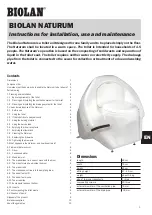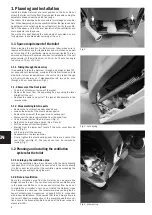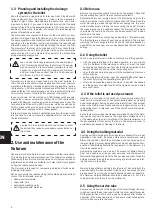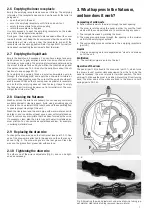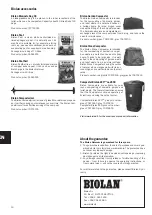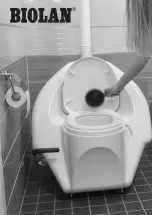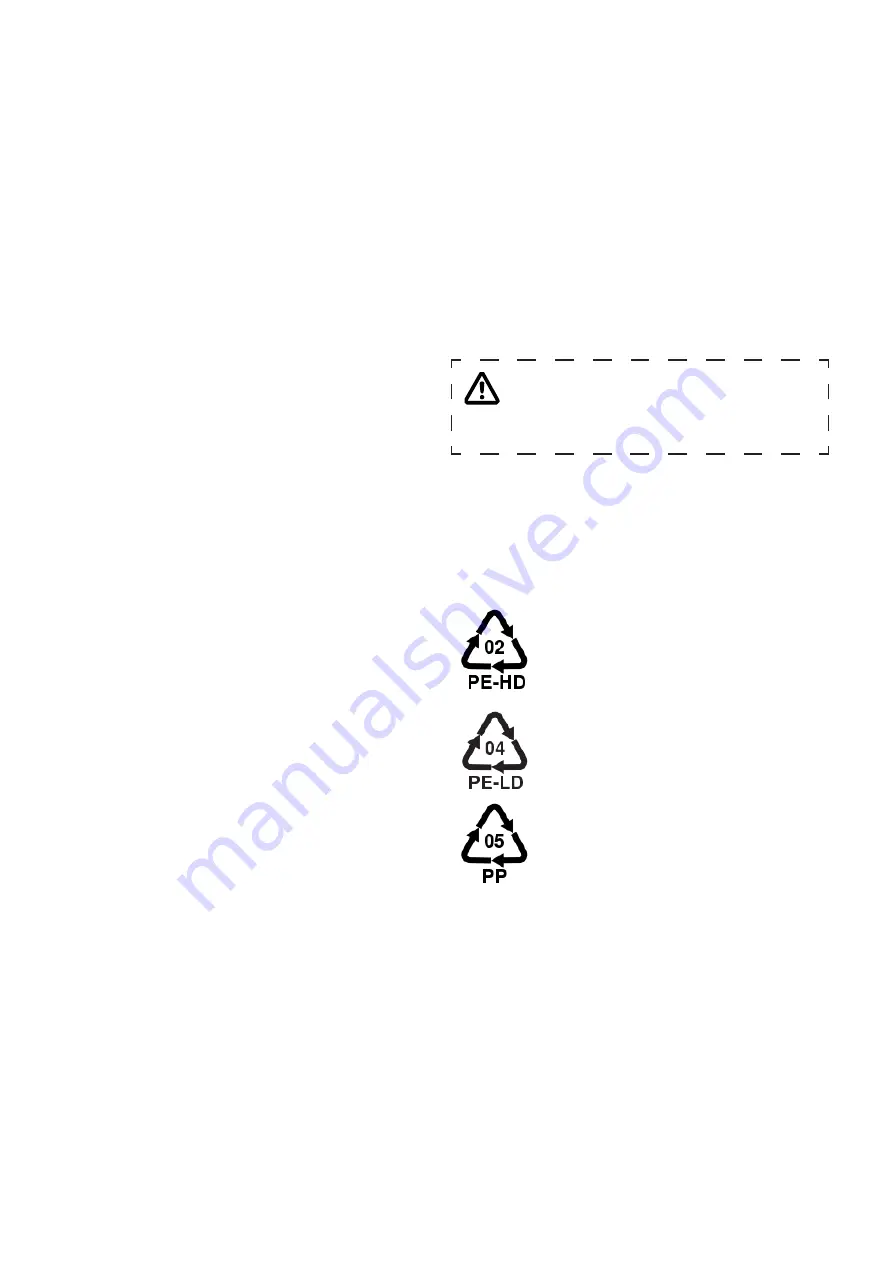
9
5. Post-composting the toilet waste
The compost emptied from the Biolan Naturum is partially mature.
Post-composting is always recommended for the compost. If the
compost is to be used for vegetable plots or for edible plants, post-
compost it for about a year in order to exterminate the microbes in
the compost mass.
You can compost the toilet waste together with garden waste and
domestic bio-waste. While composting, make sure to observe the
local regulations on waste handling and consider sufficient protec
-
tive distances to neighbours, wells and nearby bodies of water.
Organise the composting so that no liquids seep from the compost
into the soil. The Biolan Garden Composter or the Biolan Biolan
Stone Composter (see Accessories on page EN-10) are suited to
the purpose.
The micro-organisms in the compost decompose organic matter un-
der aerobic conditions. After the composting has continued for 1-3
years, the result will be compost soil. To ensure that the composting
is as efficient as possible, provide the waste-decomposing micro-or
-
ganisms with favourable living conditions. The basic requirements
for compost are the presence of oxygen, moisture and nutrients.
The micro-organisms in the compost live in a humid environment,
so the compost must be suitably moist. Therefore, dampen the
compost with water or separated urine, which also provides the
compost with a good source of nitrogen supplement. To ensure
that the compost is sufficiently airy, use coarse bulking material or
branch chaff in layers among the waste. Compost that is too tightly
packed or too wet is anaerobic and starts to rot and smell.
After the addition of toilet waste or liquid, carefully cover the sur-
face of the compost with bulking material, garden waste or peat.
When composting, follow the instructions for the composter that
you are using. Toilet waste, composted with care, makes excellent
soil conditioner for perennial plants, shrubs, trees and a vegetable
plot.
Disposal of the product
The raw materials used are presented in the list (see page 4). Dis-
pose of each part as prescribed. Always follow the regional and
collecting-point-specific instructions.
To energy-from-waste process or recycling of
plastic:
EPDM = ethylene propylene
PE = polyethylene
PP = polypropylene
To energy-from-waste process:
PU = polyurethane
To collection of metal:
RST = stainless steel
ST Zn = hot-galvanised steel
To recycling of paper
Paper
6. Utilisation of liquid
You can use the separated liquid as nitrogen fertiliser as such or
diluted with water, for example, for lawns, ornamental bushes and
perennial plants. In the spring, in connection with the initial fertili-
sation, it can also be used for a vegetable plot. During the growing
season urine should not be applied directly to edible plants. The
recommended storage time for urine is about 2-3 months before
it should be used in the garden. Do not apply urine to plants in the
autumn, in order to avoid disturbing the perennials' preparation
for winter.
A safe dilution ratio is 1:5, which means one litre is diluted with five
litres of water.
You can use also undiluted urine, but the area must then be care-
fully watered after the application to avoid early blight. Carry out
the application when it is cloudy, either early in the morning or late
in the evening, when the evaporation of nitrogen and odour-related
problems are at a minimum. During the growing season, you can
apply 1-1,5 l/m² undiluted urine in a kitchen garden.
Please consult your local waste advisor or the secre-
tary for environmental affairs in your municipality for
regulations on composting.
Visit www.biolan.fi for more information on composting
and the utilisation of urine.



